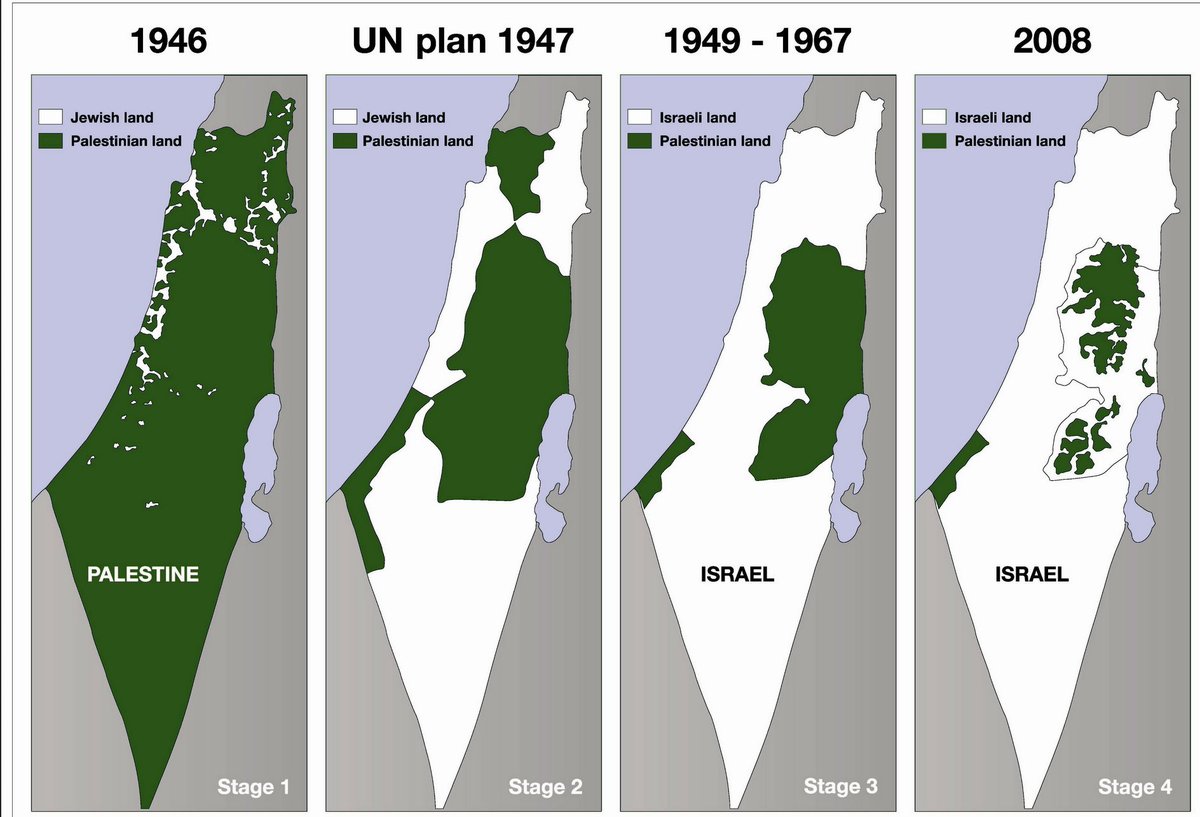With Israel’s full-blown ground incursion into Gaza still looming, it’s time to go over The Palestine Myth again, i.e. just about everything your left-wing types spew about how Israel “dismembered Palestine” is wrong.

This is a map of the territory now known as the State of Israel, and many use it to support their argument that modern Israel has ‘stolen’ the lands of Palestinian Arabs.
But there was never a country called ‘Palestine’ to begin with. That name is for a territory, not an actual country.
So, the whole “Israel took land from a country” idea?
It’s not the full picture.
Let’s skip the ancient empires and zoom in on more recent history.
Specifically, to the Ottoman Empire that governed the territory in question for four centuries, from 1516 to 1917.
This is an essential context because, during their rule, the area we now refer to as Israel and Palestine was part of a much larger imperial jurisdiction, and not a sovereign state called ‘Palestine.’
The area had a relatively sparse population. Throughout their rule, the Ottomans encouraged Muslim migration to Palestine, primarily from Egypt and Sudan. This is, in fact, the origin of many of today’s Palestinians, as indicated by the surnames of major clans.
After WWI, starting in 1917, Britain took over the territory. They quickly issued the Balfour Declaration, which was the first nod to creating a Jewish homeland in Israel.
Pro-tip: If a lefty wants to debate you on the Middle East, bring up The Balfour Declaration. If they don’t know what that is, point out that they’re simply too ignorant of the most basic facts of the region to have an informed conversation and disengage. (There I go again, winning friends and influencing people…)
On Nov 29, 1947, the UN passed a partition plan dividing the territory of British Mandate Palestine between Jews and Arabs. It recognized both sides’ rights to establish a nation-state within agreed-upon borders, a move voted on and approved by UN member states.
The Jewish community fully embraced the UN’s partition plan, but the Arab population flatly rejected it.
Armed conflict against Jewish settlements started almost immediately, dubbed the War of Independence, even as British rule persisted.
On the last day of the British Mandate, May 14, 1948, a Jewish state was declared. The very next day, armies from Syria, Iraq, Jordan, and Egypt, with smaller forces from Lebanon and Saudi Arabia, invaded the territory, initiating the 2nd phase of the War of Independence.
After nearly a year of fighting, the young State of Israel successfully repelled invading foreign armies and internal Arab forces, capturing additional territories in the process.
The armistice lines of 1949 established that the West Bank would be under Jordanian control, and the Gaza Strip under Egyptian control. The remaining territories were incorporated into Israel. These borders held until the 1967 Six-Day War.
Which is when Israel captured the Sinai, the West Bank, Gaza and the Golan Heights.
In 1977, Egyptian President Anwar Sadat visited Israel, marking the beginning of a peace process between the two countries. As part of this, Israel returned the Sinai Peninsula to Egypt. Egypt, however, declined to retake control of the Gaza Strip, leaving it in Israeli hands.
The 1993 Oslo Accords led to a phased transfer of most of the West Bank and Gaza Strip to Palestinian control.
Fast forward to 2005, Israel unilaterally disengaged from Gaza Strip, evacuating all its settlements.
Since 2005, there’s been no Israeli presence—civilian or military—in Gaza. Since then, Hamas, a terror organization, effectively controlled the territory.
The last is not strictly true, since Operation Cast Lead (i.e., Israel reacting to the last time Hamas tried this bullshit) resulted in a short military presence in Gaza while the IDF thoroughly kicked Hamas’ ass.
His conclusion:
- There has never been a sovereign state called Palestine. In fact, as of today, the territories belonging to the Palestinian Authority are the largest ever held by an entity defined as Palestinian.
- The majority of Palestinians originated from migration from countries like Sudan and Egypt during the Ottoman Empire, with no proven historical connection to Israel.
- Arabs residing in Israel before 1948 were offered the chance to establish their own nation-state but chose to go to war instead. They can’t blame anyone but themselves for the outcomes.
- Regardless of history, millions of Palestinians currently live in Gaza and the West Bank, and a viable solution must be found for their peaceful coexistence.
- It seems that Palestinians have been the ones sabotaging solutions so far.
And how.
(Some Twitterisms like hashtags stripped.)






